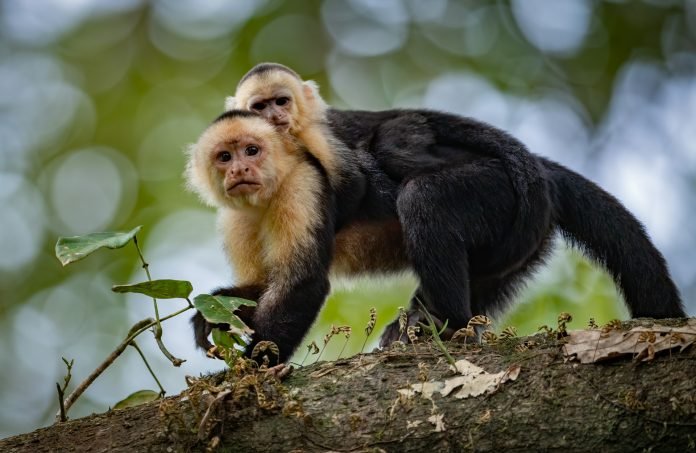
Once upon a time, our ancient relatives had tails, much like monkeys do today. But as time went on, humans and our closest ape cousins lost this feature.
A fascinating study led by scientists at the NYU Grossman School of Medicine might have found a clue to this mystery.
Their research, which made headlines in the journal Nature, suggests that a tiny genetic twist could be the reason behind our tailless condition.
The team of researchers compared the genetic blueprints of humans and apes, who do not have tails, with those of monkeys, who do.
In their genetic investigation, they discovered something unique: a small piece of DNA present in both humans and apes but missing in monkeys. This DNA snippet, found in a gene known as TBXT, seemed to play a crucial role.
To dig deeper into this, the scientists conducted experiments on mice. They introduced the same DNA change into these mice to see what would happen.
The results were striking – some of the mice were born without tails, showing a variety of tail lengths among them. This experiment offered a glimpse into how our ancestors might have lost their tails through evolution.
Bo Xia, the leading researcher of the study, shared his long-standing curiosity about how humans ended up tailless.
His work, along with that of his colleagues Jef D. Boeke and Itai Yanai at NYU, and his later affiliations with Harvard and the Broad Institute, has shed light on this intriguing aspect of human evolution.
Previously, over 100 genes were linked to tail development in vertebrates, but it was unclear how tail loss actually occurred. The team hypothesized that the loss might have been due to mutations in these genes.
However, their study brought a new perspective. It wasn’t mutations in the TBXT gene itself but the addition of an AluY DNA snippet into the gene’s regulatory region that made the difference.
This finding was unexpected because it involved a process where genetic information is converted into proteins, the building blocks of the body.
The AluY insertion influenced how the gene’s instructions were processed, leading to different outcomes for tail development.
This particular type of DNA insertion, part of what scientists call “jumping genes” or “mobile elements,” can move around the genome and insert itself into various locations.
What makes the AluY insertion so noteworthy is its rare impact on gene function, as most similar insertions don’t affect how genes work.
But in this case, the insertion within the TBXT gene played a critical role in tail development, showing how a small genetic change can have a significant physical impact.
The researchers believe that tail loss in primates, including humans, occurred around 25 million years ago. This evolutionary change might have been advantageous for living on the ground rather than in trees.
However, such a significant change could also bring drawbacks. The study observed a slight increase in neural tube defects in mice with the AluY insertion in the TBXT gene.
This suggests that losing a tail might have had its downsides, possibly contributing to certain birth defects seen in humans today.
The team’s discovery opens up new avenues for understanding the complexities of genetic evolution and how specific traits, like the loss of a tail, have shaped the course of human development.
This research not only answers questions about our tailless condition but also highlights the intricate balance of evolution, where every change carries both benefits and costs.
The research findings can be found in Nature.
Copyright © 2024 Knowridge Science Report. All rights reserved.



